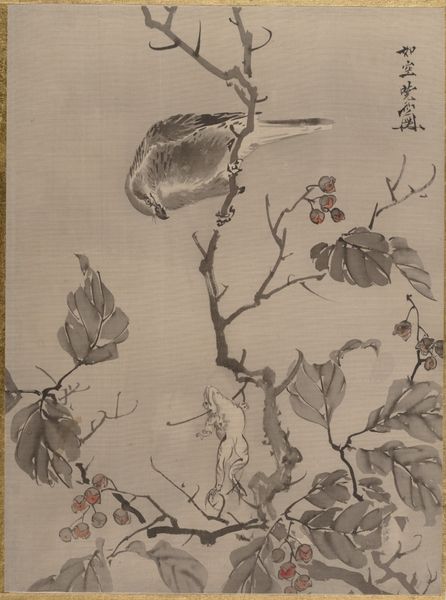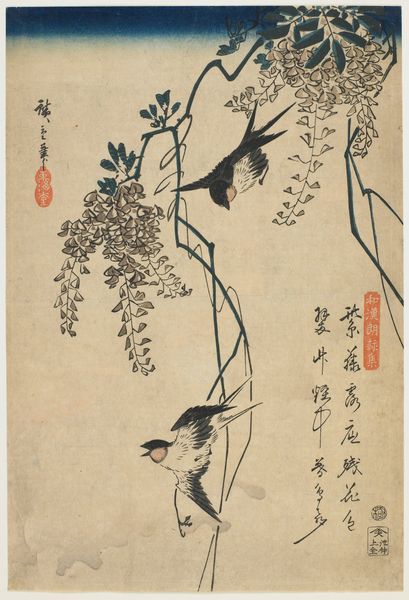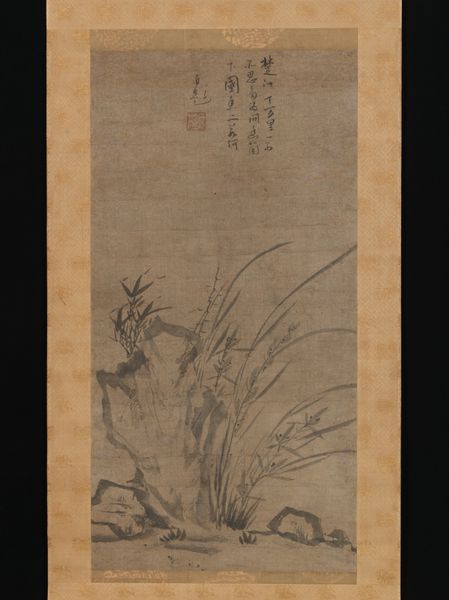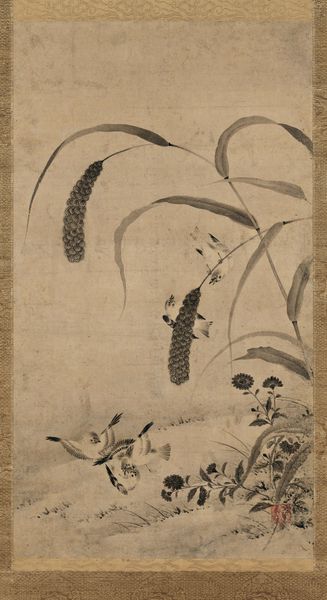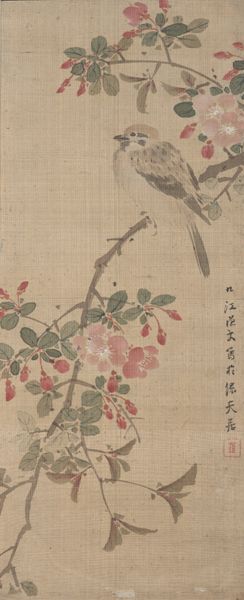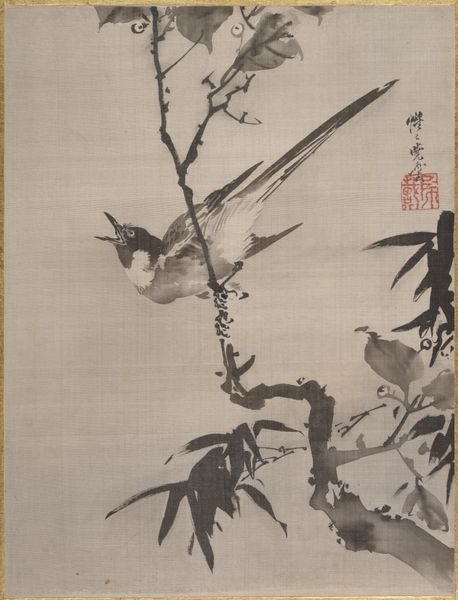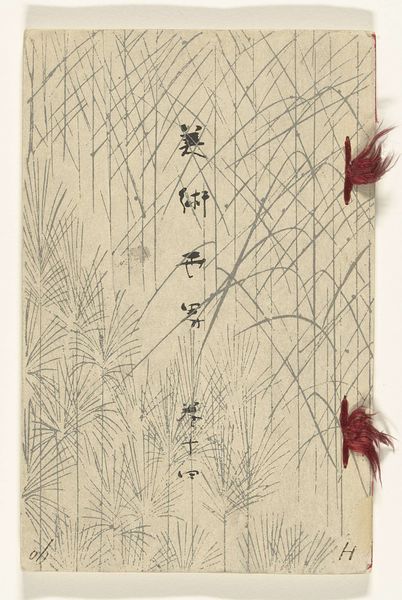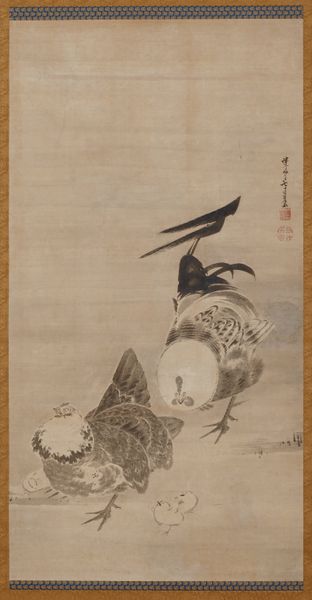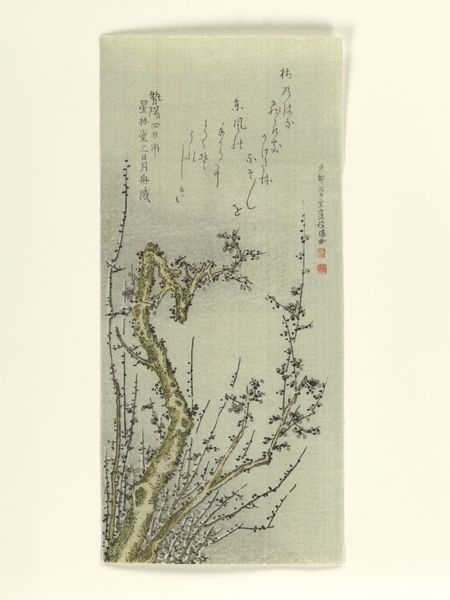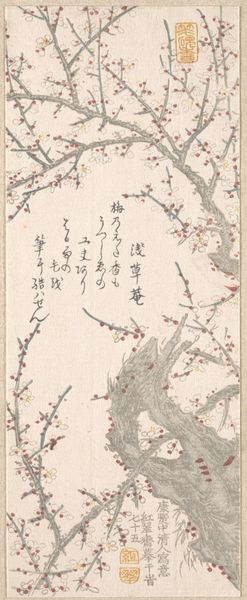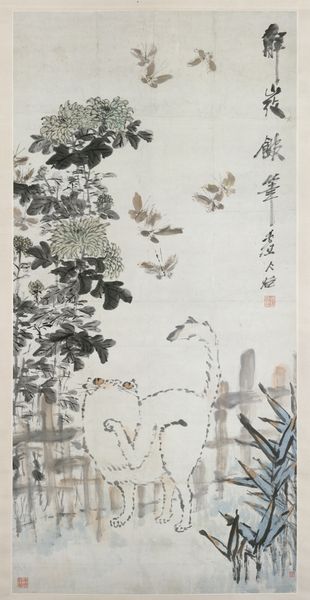
drawing, print, paper, ink, woodblock-print
#
drawing
# print
#
asian-art
#
landscape
#
bird
#
flower
#
ukiyo-e
#
japan
#
paper
#
ink
#
woodblock-print
#
plant
#
orientalism
#
japanese
Copyright: Public domain
Curator: The piece before us is Utagawa Hiroshige's woodblock print, "Plum Blossom and Bush Warbler," dating to 1838. Editor: It's delicately balanced, with such sparse use of line and color, there is a subtle melancholic atmosphere conveyed, it really draws you in. Curator: Indeed, the plum blossom is an ancient symbol, representing perseverance, hope, and the transience of beauty. Notice how the blossoms contrast with the warbler; while plum blossoms can symbolize the coming of Spring, the presence of the bird could be connected to broader social or historical elements... birds themselves are a representation of freedom or a harbinger of messages. Editor: This is achieved with humble materials. We are looking at a woodblock print; it shows a meticulous process involving carving and layering of ink onto paper. We should remember that craftspeople were vital, and without their refined and specialized expertise with printing blocks, we would have none of this celebrated art! The grain of the wood subtly infuses the piece with warmth, acting as a textural grounding for the ink. Curator: It goes deeper. Hiroshige masterfully captures what the Japanese call "mono no aware"—the pathos of things, or the awareness of impermanence. The bush warbler, so vividly rendered, accentuates the ephemeral nature of beauty found within life's fleeting moments, wouldn't you agree? Editor: Definitely, you know, even looking at the type of paper used says a lot about accessibility and distribution during that era; it becomes about so much more than aesthetics, revealing what was prioritized, available, who were able to create, and who could purchase such images... Curator: True. The symbolic layers of the blossom and bird create a unique, subtle, yet profoundly resonant impression; such simple motifs point to the intricate psychological, cultural, and historical associations connected with visual representation in Japan. Editor: Thinking about what this print is composed of from beginning to end helps one remember its original accessibility, yet admire its longevity within global artistic movements across eras of material culture, to this day!
Comments
No comments
Be the first to comment and join the conversation on the ultimate creative platform.
